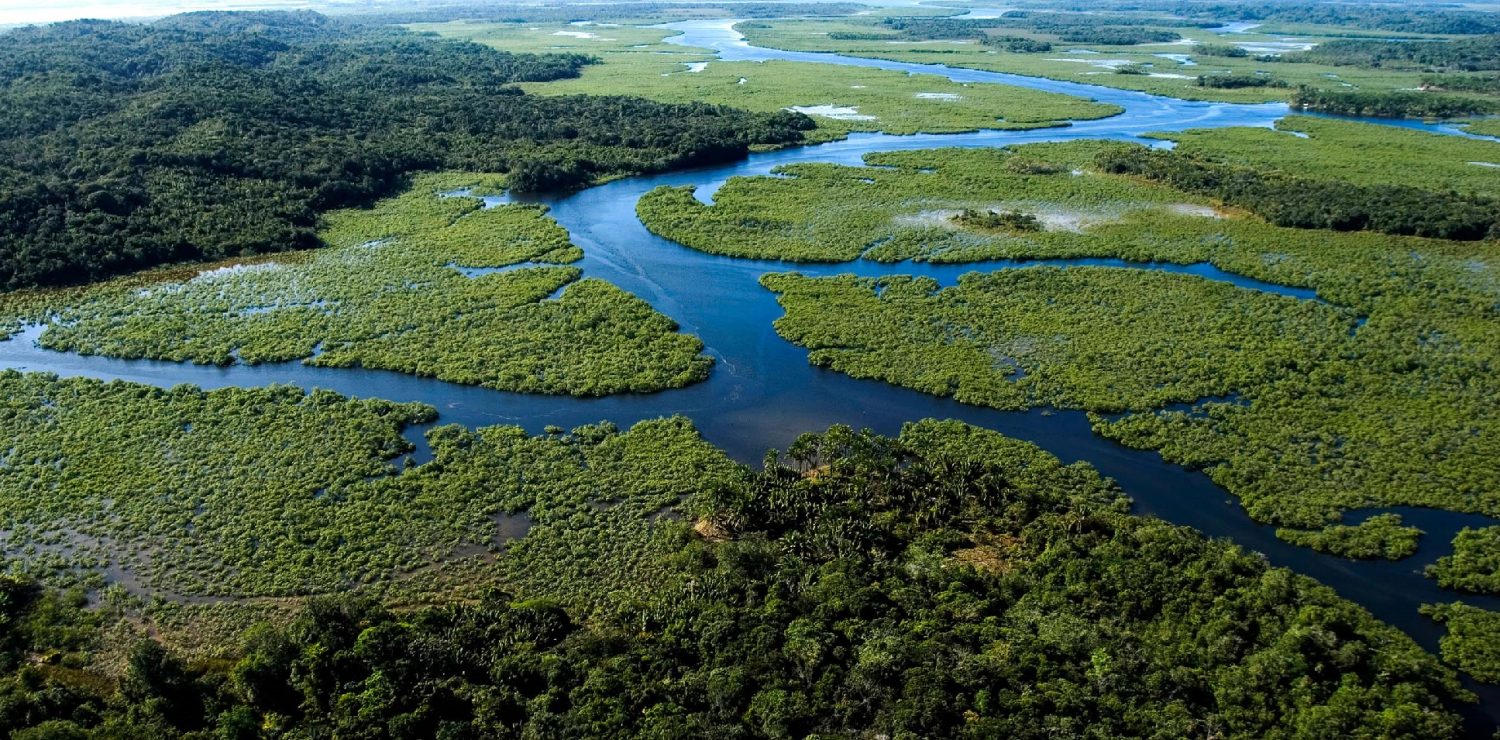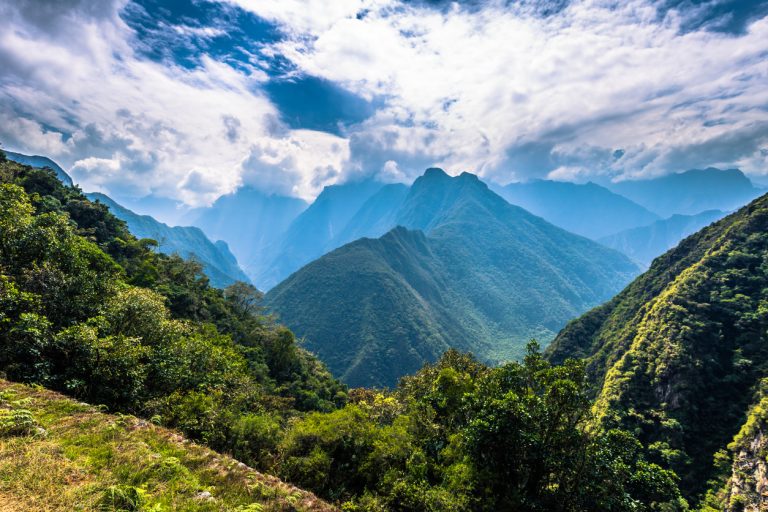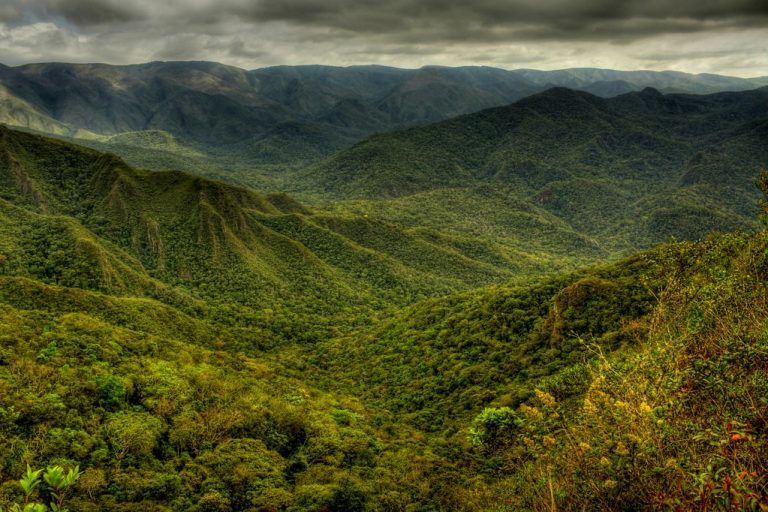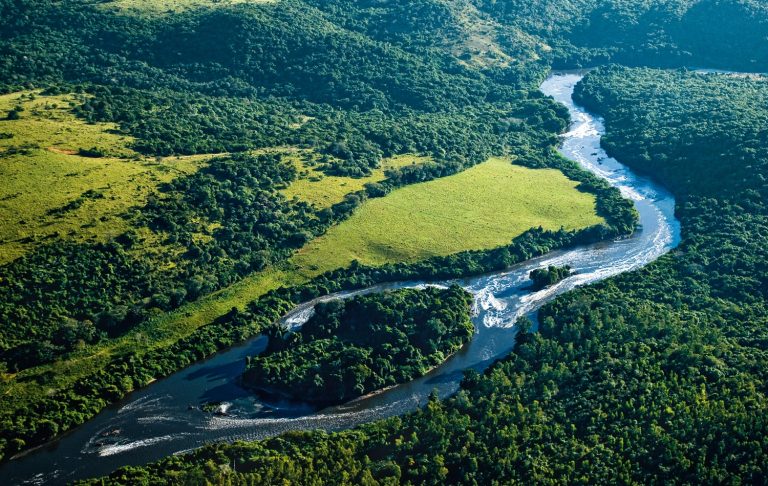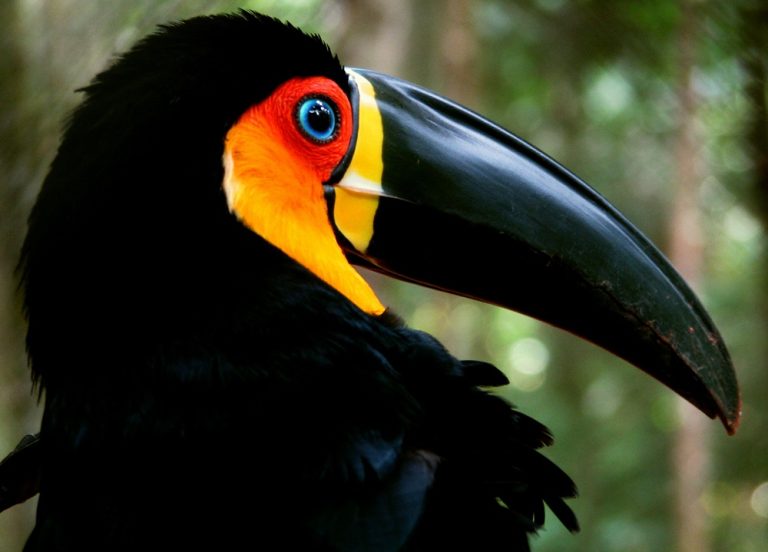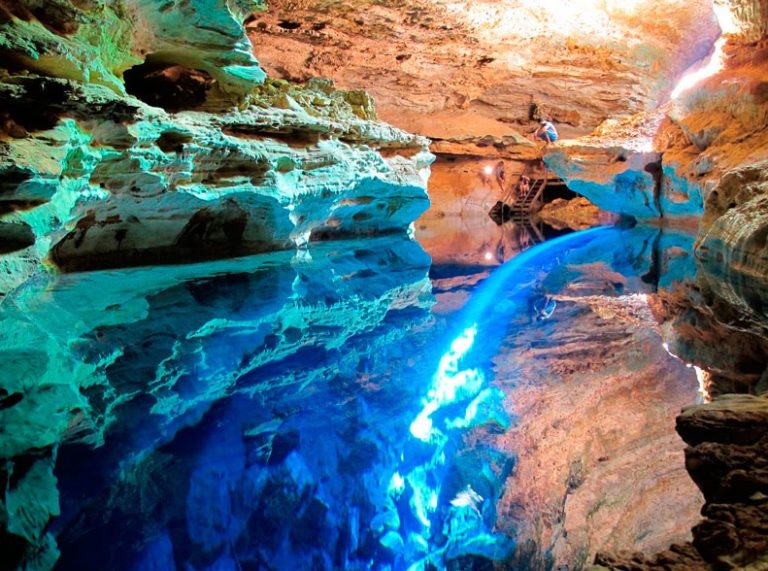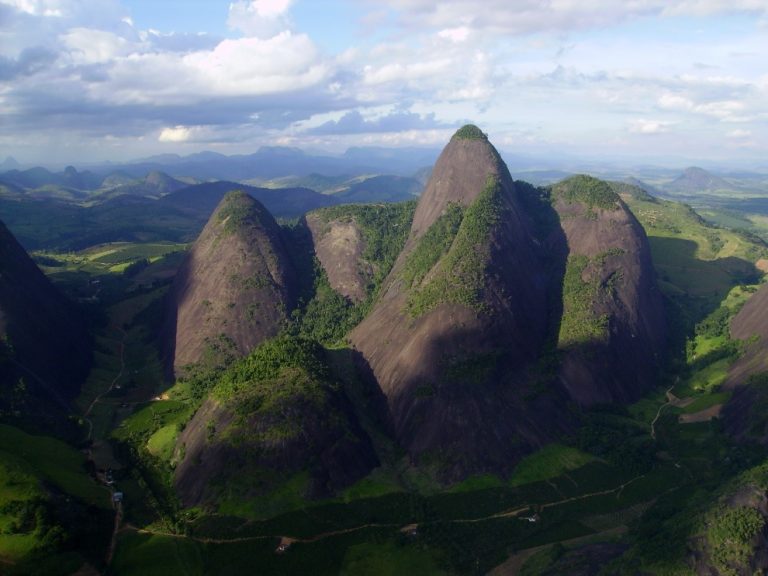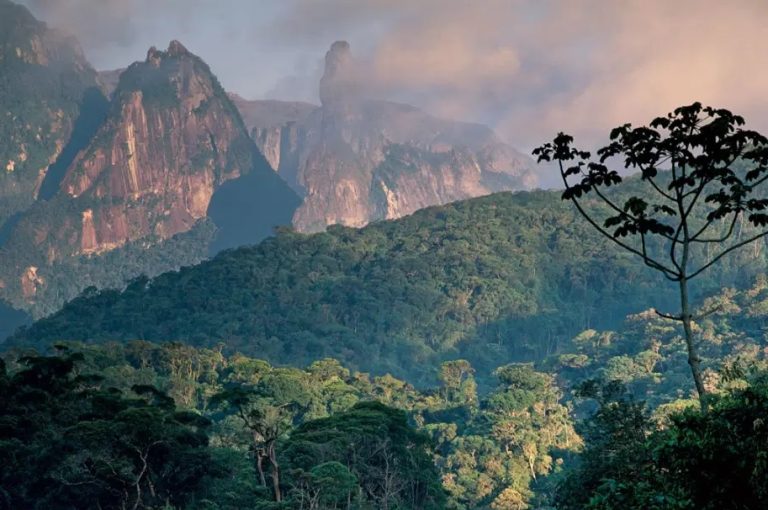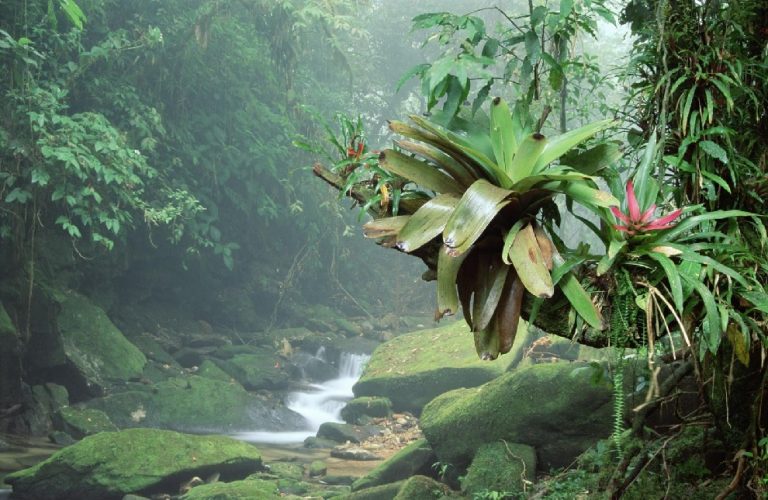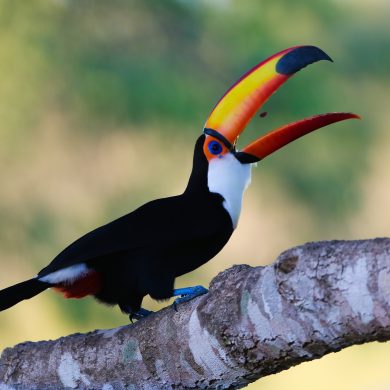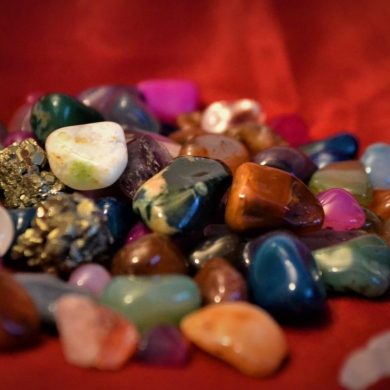The Atlantic Forest, or Mata Atlântica in Portuguese, is an ancient and priceless part of nature. Its biodiversity is among the most impressive in the world, and its ecosystems are home to an extremely rich and varied flora and fauna. Once a vast expanse, today’s Mata Atlântica is but a remnant of the original, fragmented into various reserves. It still however encompasses large swathes of southeastern Brazil, stretching from the Bahia coast to the northeast. It is divided into two main areas: one in the southeast, between Paraná and the south of São Paulo, and the other on the Atlantic coast, known as the “Discovery Coast.” Today, the Atlantic Forest covers some 600,000 hectares, a fraction of its original size. It once covered 15% of Brazil’s territory, compared with just 7% today. This destroyed natural space has given way to over 3,000 cities and around 100 million people. Nevertheless, some areas are protected from hunting and logging. We introduce you to this exceptional expanse of nature, an emblematic treasure that deserves to be visited at least once in a lifetime.
The Mata Atlântica, a Sanctuary for Brazilian and Global Biodiversity
The Atlantic Forest is a biome of immensely varied environments. These ecosystems have developed unique floral and faunal varieties, inherent to several types of climate. From sub-tropical to dry, depending on region and height, the Mata Atlântica is a thousands-year-old, almost magical forest. The endemism rate of its many species is very high, giving the forest a unique character!
A Hybrid Brazilian Rainforest
Brazil is an immense country with fascinating biodiversity. The Atlantic Forest extends over different regions, giving rise to nuanced vegetation belonging to typical environments. In the southeast, from Paraná to São Paulo, there are no fewer than 25 protected areas! Spread over a wide range of geographical zones, the variety of ecosystems is utterly impressive. From mountains to coastal plains, via islands and estuaries, zones can be dry, humid, or hot, giving rise to lush, beautiful vegetation. Massive forests, bromeliads, and orchids, interspersed with waterfalls and jutting rocks, make up the mountainous landscapes of the Atlantic Forest. Mangroves, restingas, and marine ecosystems abound on coastal islands and estuaries. The southeast zone also boasts one of Brazil’s highest peaks, the 2891-metre Bandeira peak. Added to this are the many caves (around 300) that litter the mountainsides. The Casa de Pedra cave is one of the best known, with the world’s highest entrance perched at 215 metres.
On the “Discovery Coast,” named after Pedro Cabral, the first European to land in Brazil, there are eight protected areas. Located between the south of the state of Bahia and the north of the state of Espirito Santo, the Atlantic Forest in this area is particularly precious. Indeed, its current biodiversity highlights the continent’s once-great forest ecosystems, which are now extinct. Its biological richness and evolutionary structure are therefore crucial indicators for the protection of this exceptional natural environment. There are three national parks: Descobrimento, Monte Pascoal, and Pau Brasil, as well as several federal and private biological reserves.
The biodiversity of the “Discovery Coast” is one of the richest in the world. The endemism rate of its floral and faunal species is very high, and it is for this reason that the reserve was classified by UNESCO in 1999. The two zones, southeast and coastal, are intersected by numerous major rivers. These include the Rio Grande do Sul, which meanders along the southeastern part of the country for 1300 km, the Rio Tietê, which passes through São Paulo, and the Rio Jequitinhonha, which crosses the states of Bahia and Minas Gerais.
The Mangrove Oyster: A Unique Delicacy
Another notable variety is the mangrove oyster, known as Crassostrea gasar. Originally from Senegal and brought to Brazil during the era of the slave trade, these oysters now flourish in the mangroves of Guyana and Pará state. Since the late 1960s, efforts have been made to develop sustainable oyster farming in these regions.
Mangroves provide an ideal environment for these oysters, which, in turn, help protect the mangroves by filtering the water. Unlike oysters grown in parks in Europe and the United States, these oysters are attached to floats submerged at high tide in water with salinity levels reaching up to 40%. While Santa Catarina’s oysters have garnered significant attention, those from Pará are also becoming highly sought after.
Species Endemic to the Brazilian Coastline
The Mata Atlântica is made up of some of the richest ecosystems in the world. Its ecological and scientific values are invaluable to the planet’s survival. The number of endemic species is at an all-time high, whether in the southeast or on the “Discovery Coast.”
Between Paraná and São Paulo, 70% of the flora, 85% of the primates, and 25% of the mammal species are endemic. There are over 120 species of mammals, including the jaguar, one of the most threatened species. Over the last fifteen years, the number of jaguars has fallen by almost 80%, and there are now just 250 of them. Another emblematic species of the Southeast is the spider monkey or Southern Muriqui, the largest primate in the Americas. Birds also play a central role in this exceptional ecosystem, with the Atlantic Forest boasting more species than the Amazon rainforest—800 out of a total of 2,000. Parrots, hawks, hummingbirds, and woodpeckers gently punctuate this luxuriant wilderness.
This area of the Atlantic Forest also is inhabited by restingas, an astonishingly diverse ecosystem with an enchanting character. Imagine a tall forest made up of a wide variety of trees, sometimes almost 40 metres high. Closer to the coast, small, bushy trees and thick bushes cover the area.
Finally, creeping plants hug the sandbanks along the beaches. The Parque Estadual Costa do Sol in the state of São Paulo, for example, is home to a beautiful restinga well worth a visit. Even further south, mountain forests dominate. Nestled between 500 and 1,500 meters above sea level, the forest is bathed in high humidity. Immense mountains rise above wide, tree-covered valleys, a spectacular panorama sometimes enhanced by thick fog on the highest peaks. This environment is characterized by a rich flora. Palms, bamboos, bromeliads, and orchids inhabit the lower parts of the mountains, while the higher elevations are covered with lichens and mosses. An enchanting setting.
The “Discovery Coast” is not to be outdone. It alone contains 20% of the world’s flora, including over 600 species threatened with extinction. In some areas, there are as many as 450 types of tree in one small area! The Pau-Brasil is an emblematic species, named by the Portuguese colonists, who eventually gave the name to the country. Added to this are 261 mammal species, 21 marsupials (15% of which are endemic), 620 bird species, 200 reptiles, and 280 amphibians. Endangered species are unfortunately often endemic species, victims of poaching and hunting.
Because of its proximity to the ocean, this patch of forest is mainly occupied by mangrove swamps. Highly concentrated around bays and estuaries, mangroves are an essential environment for many aquatic species. The biodiversity of this ecosystem is impressive, and it is one of the most productive environments in terms of biomass, as well as being the one that absorbs the most CO2. With its dense vegetation and brackish water (a mixture of fresh and salt water), the mangrove is like a forest with its feet in the water. It’s mainly made up of mangroves, small, bushy trees perched on thick roots that enable them to stay afloat. Characteristic of tropical and subtropical zones, mangroves are inhabited by many kinds of crustaceans, fish, molluscs, reptiles, and insects. Seventy percent of Brazilian mangroves are now protected areas.
The Atlantic Forest is a veritable mosaic of biodiversity, as rich as it is precious. Its conservation is one of the major ecological challenges of the 21st century.
Protection and Ecotourism in the Heart of the Atlantic Forest
Marked by the first steps of European colonization, the Mata Atlantica has suffered greatly from human settlement. Sugar and coffee plantations and numerous banana plantations began its destruction in the 16th century, followed by massive urbanization in the 20th century. Today, it is very fragmented and more like a relic. A major problem for its conservation is its lack of media coverage. Compared to its sister forest, the Amazon, the Mata Atlantica is still largely unknown. Between 2015 and 2016, urbanization projects multiplied as deforestation went unchecked by the Brazilian state, and the losses proved disastrous. In recent years, several associations, including SOS Mata Atlântica, have reported a certain drop in deforestation figures, as well as an upsurge in local interest. Since 2019, a major ecological tunnel project linking the north and south of the country through the forest has been in the pipeline. Named “Oiapoque-Chui” in reference to the two towns at either end of the trail (Guyana and Uruguay), the program is supported by the ministries of tourism and the environment. This “ecological corridor” should measure a total of 8,000 km, and cross the Mata Atlantica at its heart. The trail should enable nature lovers to reconnect with nature through a beautiful “trilha” (hike) through a legendary forest.
What are the Mata Atlântica National Parks?
The Mata Atlantica is one of the oldest forests in the world and therefore possesses a unique charm. This wealth of landscapes makes it one of the great attractions for hiking enthusiasts and other wilderness lovers. For their protection, most of the areas that exist today have been placed under the status of biodiversity reserves as National Parks. Because they are spread over such a wide area of Brazil’s coastline, it’s not unusual to come across them on a tour of Brazil.
In this section, you’ll find the main National Parks in Brazil, all or part of whose ecosystem is made up of Atlantic Forest. To help you find your way around, we’ve divided this list into two parts: National Parks located in the Nordeste region, the northern half of the country, and those located in the Sudeste region, for the southern part of Brazil.
The Atlantic Forest National Parks of the Nordeste Region / “Discovery Coast”
- Ubajara Park / Ceará
- Alto Cariri Park / Bahia State
- Chapada Diamantina Park / Bahia State
- Descobrimento Park / Bahia State
- Monte Pascoal Park / Bahia State
- Park Pau Brasil / Bahia State
- Serra das Lontras Park / Bahia State
The National Parks of the Atlantic Forest // Southeast Region
- Pontões Capixabas Park / State of Espirito Santo
- Caparaó Park / State of Espírito Santo / State of Minas Gerais
- Itatiaia Park / State of Minas Gerais / State of Rio de Janeiro
- Parc Restinga de Jurubatiba / State of Rio de Janeiro
- Serra dos Órgãos Park / State of Rio de Janeiro
- Tijuca Park / State of Rio de Janeiro
- Serra da Bocaina Park / State of Rio de Janeiro / State of São Paulo
- Ilha Grande Park / State of Mato Grosso do Sul / State of Paraná
- Iguazu Park / State of Paraná
- Parc Saint-Hilaire / State of Paraná
The Atlantic Forest, with its rich biodiversity and stunning landscapes, remains a hidden gem along Brazil’s coastline. Its protection and conservation are crucial for maintaining the ecological balance and natural beauty of this unique rainforest. By exploring its national parks and supporting conservation efforts, we can help ensure that this extraordinary natural treasure endures for future generations to appreciate and enjoy.
